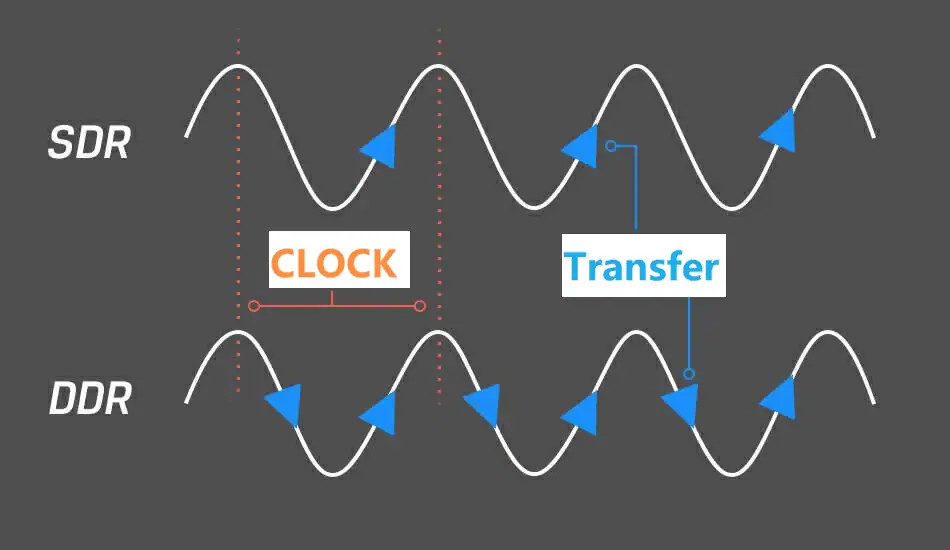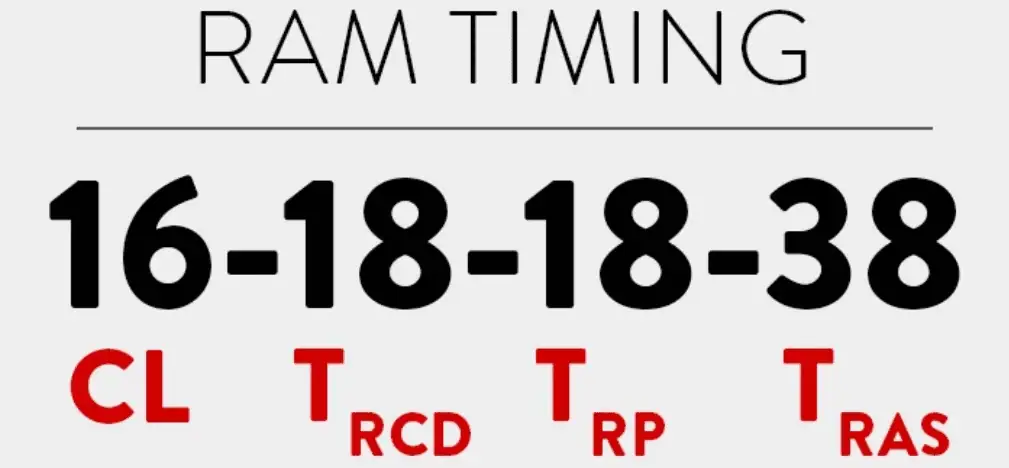When purchasing memory modules, manufacturers often emphasize the frequency, typically measured in MHz or MT/s, while another important parameter to consider is memory latency, usually represented by CL or a series of numbers connected by hyphens. However, many people tend to overlook this parameter and believe that higher memory frequencies are always better. Is this the case?

1. What is Memory Frequency?
In the early days, memory (SDRAM) frequency was measured in MHz, representing the number of data transfers per clock cycle, occurring on the rising edge of the clock. For instance, 100MHz meant 100 million data transfers per clock cycle.

With the advent of DDR (Double Data Rate) memory, each clock cycle doubled the data transfer amount, occurring on both the rising and falling edges of the clock. Although the clock rate remained the same, the effective data rate doubled, reaching 200 million data transfers per clock cycle. This led to the emergence of the measurement unit MT/s (Millions of Transfers per second).
In the SDRAM era, MHz and MT/s were equivalent, but in the DDR era, MT/s became twice that of MHz. For example, DDR with a speed of 100MHz could also be written as 200MT/s. It’s worth noting that due to consumer habits and marketing tactics, many memory modules now mix these two units. For example, a memory module labeled as 3200MHz might operate at 1600MHz.
Generally, faster memory frequencies result in faster system operation, though the impact might not always be noticeable, especially in gaming and daily office tasks.
2. What is Memory Latency?
While frequency often has a greater impact on memory performance compared to latency, the latter should not be ignored. Memory latency refers to the time it takes for memory to respond to requests. One of the key components of latency is CAS latency, often represented as “CL” or “C” in memory specifications.

Using tools like CPU-Z, one can check the CAS latency of memory under “Timings,” where CAS# Latency (CL) corresponds to the number of clock cycles needed for memory to access a set of data. The actual latency (in ns) can be calculated using the formula: “(CL x 2000) / memory frequency.”
Memory latency is particularly important in applications like video editing and rendering, but it generally has minimal impact on gaming frame rates.
3. Memory Frequency vs Memory Latency
Benchmark tests conducted by various media outlets using tools like CPU-Z, GeekBench, and AIDA64 Extreme have demonstrated the impact of frequency and latency on memory performance.
Results from AIDA64 Extreme clearly show the influence of frequency and latency. For instance, increasing frequency from 4800MT/s to 6400MT/s while maintaining the same latency resulted in a 37% and 40% increase in read/write speeds, respectively. Conversely, reducing latency from CL40 to CL32 at the same frequency also led to around a 30% increase in read/write speeds. Overall, frequency has a greater impact on performance compared to latency.

Geekbench results similarly indicate that higher memory frequencies result in larger performance differences, while latency has minimal impact.
4. Conclusion
In most scenarios, memory frequency indeed has a greater impact on performance compared to latency. However, this doesn’t mean that purchasing high-frequency memory is always the best choice. Consider your specific needs; for tasks like video editing and rendering, low-latency memory may be more suitable.
Ideally, a balance between memory frequency and latency should be sought. For DDR5 memory, many consider a frequency range of 6000-6400MT/s with corresponding latency around CL30 to be optimal for most applications.

Disclaimer: This article is created by the original author. The content of the article represents their personal opinions. Our reposting is for sharing and discussion purposes only and does not imply our endorsement or agreement. If you have any objections, please contact us through the provided channels.



